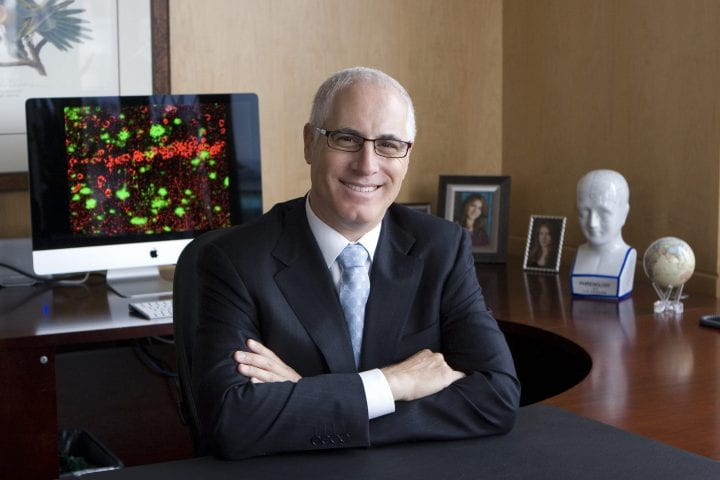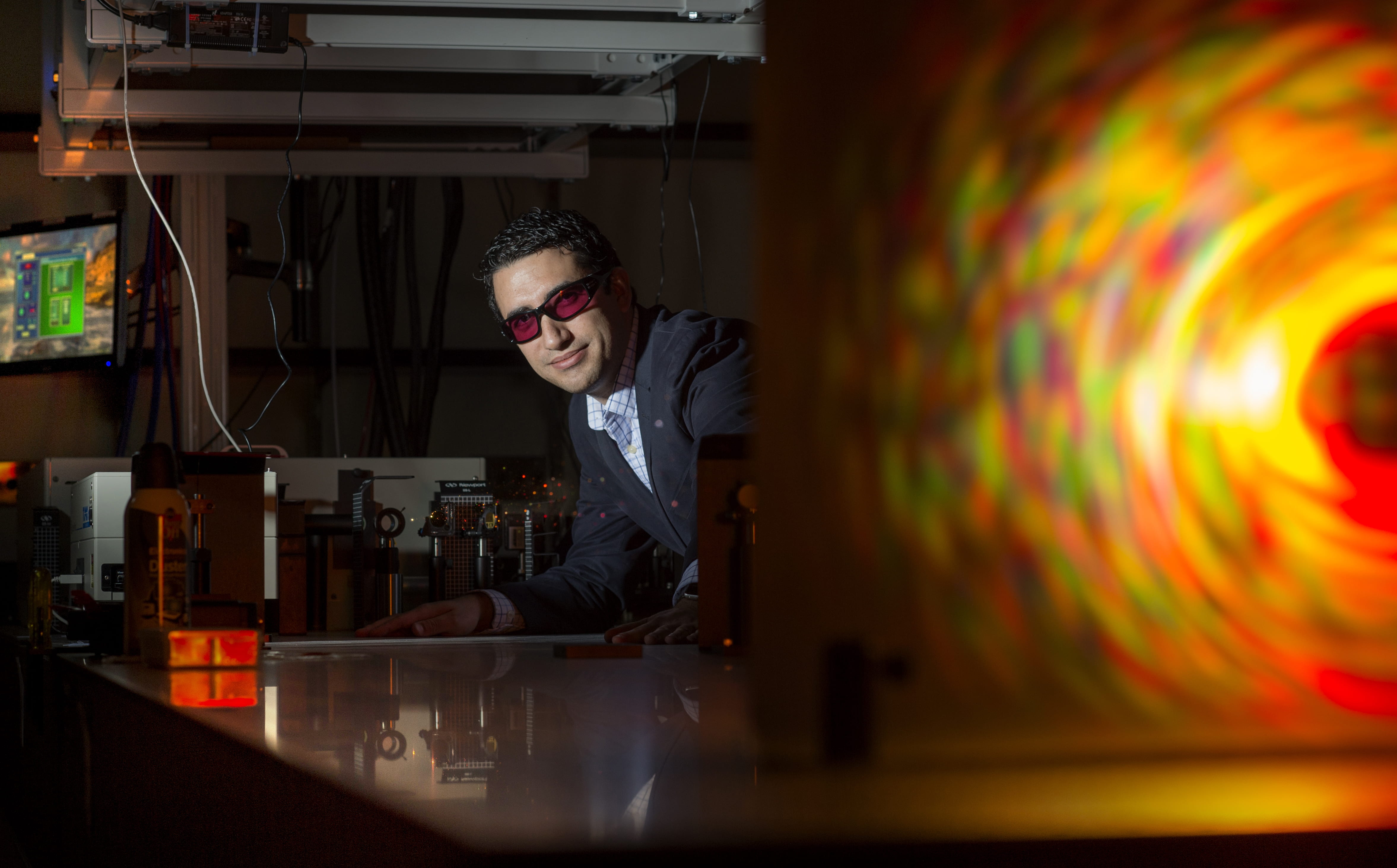New dean is bio sci booster
Frank LaFerla, renowned for his Alzheimer’s work, hopes to raise the school’s profile

For a scientist widely considered an international leader in Alzheimer’s disease research, Frank LaFerla joined the UC Irvine faculty in 1995, interestingly enough, without ever having taken a single neuroscience class.
LaFerla had received a doctorate in virology and was studying AIDS-related dementia when he sat in on his first neurobiology course, one taught by James McGaugh and Norman Weinberger, two of the nation’s top learning and memory researchers. The lessons obviously made a great impression on the young scientist.
Since that time, LaFerla has made key research breakthroughs that show promise for treating Alzheimer’s and other neurodegenerative diseases. He has served in numerous leadership roles, including as chair of the Department of Neurobiology & Behavior and director of the campus’s Institute for Memory Impairments and Neurological Disorders (UCI MIND), a research center internationally acclaimed for its work on disorders of the brain, particularly those that are age-related.
Last December, LaFerla became the Hana & Francisco J. Ayala Dean of the newly renamed Francisco J. Ayala School of Biological Sciences, heading the third-largest school on campus, with nearly 4,000 students majoring in one of its four undergraduate degree programs.
“Frank brings enormous enthusiasm and optimism to everything he does,” says McGaugh, a research professor of neurobiology & behavior and former biological sciences dean. “He wants to take actions that emphasize the character and the contributions of the school to the campus and to the public. It’s hard to imagine a more qualified person for the position.”
And with UC Irvine approaching its golden anniversary, LaFerla says, he aims to “take the school to the next level.”
He assumes the helm at a time when the biological sciences are critical to addressing such global concerns as sustainable food production, ecosystem restoration, optimized biofuel manufacturing and improved human health. And he wants to ensure that UC Irvine plays a part.
“Our brand is ‘Understanding Life: Transforming Our World,’” LaFerla says. “We will be excellent ambassadors of science who are trying to solve very important issues.”
Among his many objectives, he wants to establish a biology museum on campus that highlights the field’s rich history and the contributions of UC Irvine scientists in neurobiology, evolutionary biology and developmental biology.
“Our researchers have had a global impact, and it’s important that students and the public have a sense of what we’re doing,” LaFerla says. “We have so many luminaries here in biology, and we want the campus community to feel a part of this history.”
He himself is among the most significant figures in that history.
Growing up in a tight-knit Sicilian community in South Philadelphia – he recalls missing school one day to watch scenes from “Rocky” filmed two blocks from his house – LaFerla didn’t envision a career in science.
“Boys and girls in my neighborhood, if they went to college, were expected to become doctors and lawyers,” he says. “I went to college planning on being a doctor, but during the summer of my sophomore year, I worked in a lab and fell in love with it.”
LaFerla went on to earn his Ph.D. at the University of Minnesota and, as a postdoctoral scholar, found his niche in creating animal models of human diseases, such as genetically modified mice. In the early 2000s, he engineered the first mouse model that could express the hallmark cerebral plaques and tangles seen in Alzheimer’s disease. This mouse transformed Alzheimer’s research by giving scientists a crucial “living laboratory” of the ailment.
“Everyone uses the mouse,” said Dr. Benjamin Wolozin, professor of pharmacology at Boston University’s Alzheimer’s Disease Center, in a 2006 profile of LaFerla in UCI Magazine. “His mouse is among the most important tools available to Alzheimer’s researchers.”
With his mouse models, LaFerla has spent the last decade experimenting with compounds that could lessen the behavioral and cognitive effects of Alzheimer’s disease. And along with UC Irvine colleague Mathew Blurton-Jones, he’s collaborating with Stem Cells Inc. to create the first stem cell-based approach to treating the disease.
Additionally, LaFerla is working on what he calls his “pièce de résistance”: a mouse that expresses sporadic Alzheimer’s disease. It would represent the first living model of a form of Alzheimer’s that accounts for 98 percent of all cases and would give researchers a unique opportunity to observe the factors that trigger the onset of the disease.
“The information we can get from a sporadic mouse model can truly change what we understand about Alzheimer’s and make the creation of a treatment more of a possibility,” LaFerla says.

